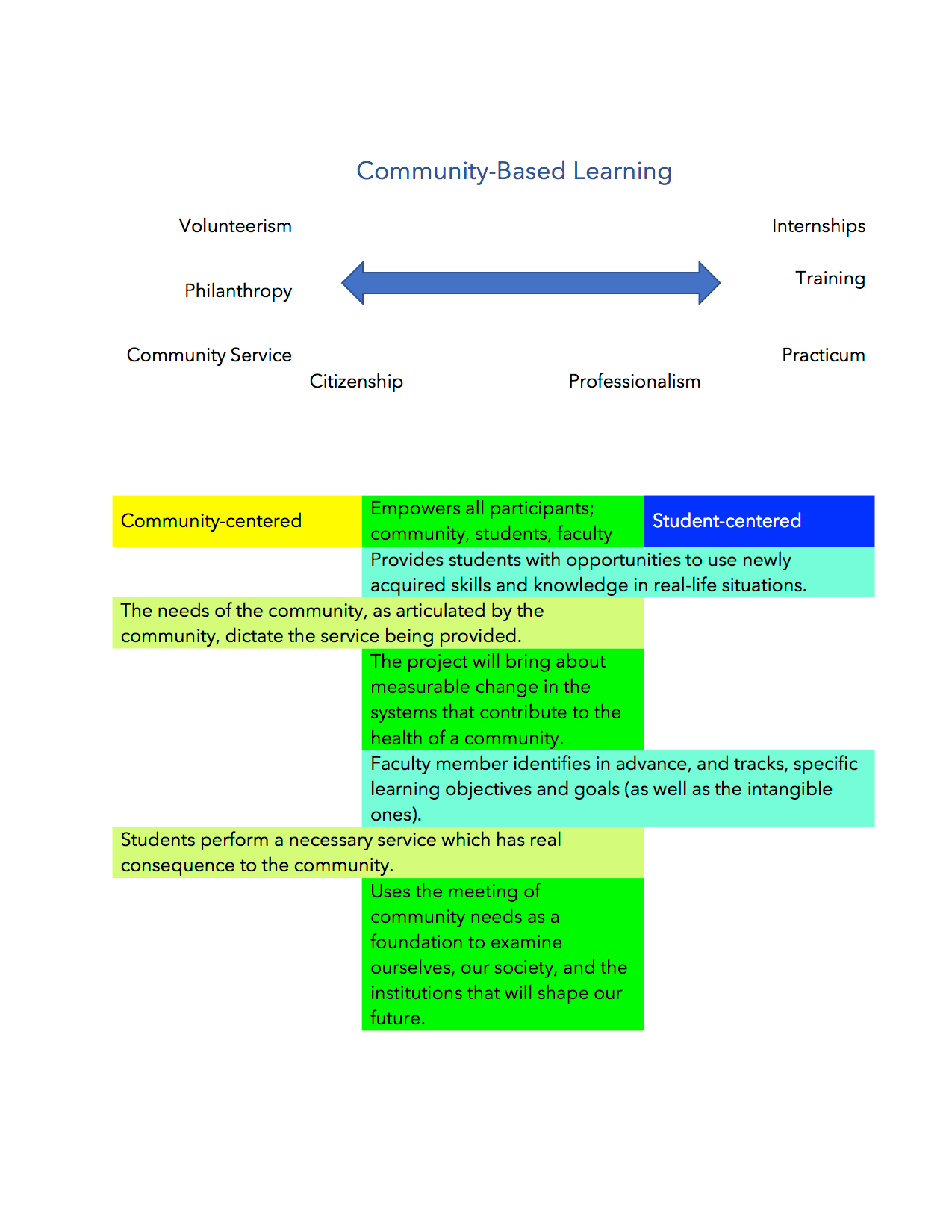Community-based learning is a teaching and learning strategy that integrates meaningful community engagement with instruction and reflection to enrich the learning experience with a greater emphasis on reciprocal learning and reflection.
“Community Based Learning (CBL) is a pedagogical approach that is based on the premise that the most profound learning often comes from experience that is supported by guidance, context-providing, foundational knowledge, and intellectual analysis. The opportunity for students to bring thoughtful knowledge and ideas based on personal observation and social interaction to a course’s themes and scholarly arguments brings depth to the learning experience for individuals and to the content of the course. The communities of which we are a part can benefit from the resources of our faculty and students, while the courses can be educationally transformative in powerful ways.” (Swarthmore College | http://tinyurl.com/jrhpf4x)
Community-based learning refers to a wide variety of instructional methods and programs that educators use to connect what is being taught in schools to their surrounding communities, including local institutions, history, literature, cultural heritage, and natural environments. Community-based learning is also motivated by the belief that all communities have intrinsic educational assets and resources that educators can use to enhance learning experiences for students. (Glossary of Education Reform | http://edglossary.org/community-based-learning/)
“… field-based “experiential learning” with community partners is an instructional strategy—and often a required part of the course. The idea is to give students direct experience with issues they are studying in the curriculum and with ongoing efforts to analyze and solve problems in the community. A key element in these programs is the opportunity students must both apply what they are learning in real-world settings and reflect in a classroom setting on their service experiences. These programs model the idea that giving something back to the community is an important college outcome, and that working with community partners is good preparation for citizenship, work, and life.” (Association of American Colleges & Universities | https://www.aacu.org/leap/hips)
“…a teaching and learning approach that integrates community service with academic study to enrich learning, teach civic responsibility, and strengthen communities {which often involves reflection}” (National Commission on Service-Learning).
Below is an experiential learning continuum. On the left-hand side of the continuum is the service we do as citizens. The right-hand side represents the service we do in a community as a professional. Community-based learning is the experience of engaging in the community through a disciplinary lens. The middle column below offers descriptors of community-based learning.
